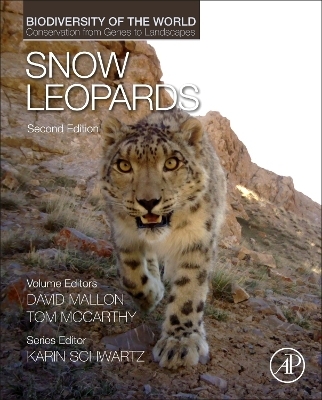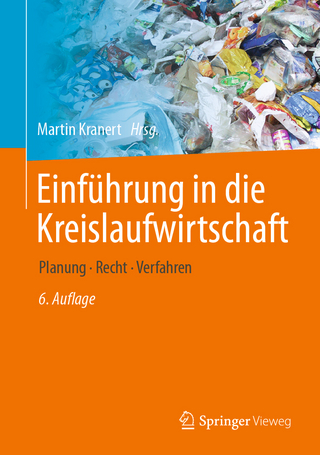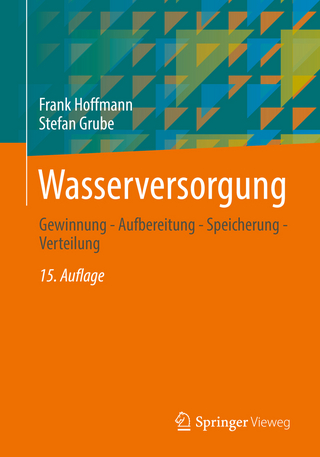
Snow Leopards
Academic Press Inc (Verlag)
978-0-323-85775-8 (ISBN)
Status and distribution are fully updated for all 12 countries where snow leopards occur. Other sections describe established and emerging threats, including human-wildlife conflict, illegal trade, infrastructure development, and climate change along with conservation solutions used to address these threats. The book concludes with a final section on global snow leopard initiatives and future potentials.
Dr. Tom McCarthy, Panthera’s Director of Snow Leopard Programs, began his conservation career studying brown bears, black bears, mountain goats and caribou in Alaska in the early 1980s. A strong interest in international conservation led him to Mongolia in 1992, where, under the guidance of Dr. George Schaller (known as “one of the founding fathers of wildlife conservation), he took over the management of a long-term snow leopard research project. He was the first biologist to use satellite radio-collars on snow leopards. McCarthy became the Science and Conservation Director of the Snow Leopard Trust in 2000 and has since led their extensive science and community-based conservation programs across much of snow leopard range in Asia. From 2002-2009, Dr. McCarthy served as Executive Director of the Snow Leopard Network, a global consortium of more than 200 professionals involved in snow leopard research and conservation. Among other research initiatives, Dr. McCarthy is leading both a range-wide assessment of snow leopard genetics that seeks to identify movement corridors which are critical to maintaining the health and genetic diversity of the species, and a revision of methods by which snow leopard populations can be monitored over time, including such novel non-invasive approaches as fecal genetics, camera trapping and statistical modeling based on sign surveys. Dr. David Mallon is not only a recognized expert on snow leopards, he is extremely knowledgeable on the conservation status of Central Asia as a whole. He conducted some of the early assessments of the status of snow leopards in Mongolia and has done surveys in many of the Himalayan range states. He has more than 25 years of field work experience in the Himalaya, Tibetan Plateau, Mongolia, Central Asia and Arabia, mainly focused on large mammals, and involving species surveys, biodiversity assessment, habitat assessment, camera trapping, training, capacity building, and training local partners in census and monitoring techniques. He is a Fellow of the Royal Geographical Society and the Zoological Society of London, as well as a member of the International Editorial Board for Oryx, the International Journal of Conservation. He has been a Steering Committee member of the Snow Leopard Network since its inception in 2003 and is currently the elected Chairman of that 400 member organization, which represents nearly every biologist and conservationist now active in the snow leopard world. He is highly respected among his peers as an expert on this cat. Dr. Karin R. Schwartz is a long-standing conservation professional with extensive experience in data management as applied to conservation programs within zoological institutions as well as for regional cooperative animal management programs and in situ conservation efforts. Her dissertation research focused on linking in situ and ex situ data management processes for endangered species recovery programs through the Species360 Zoological Information Management System. She initiated and led the development of the Association of Zoos and Aquariums (AZA) records-training programs for use of Species360 software and was Co-Administrator of the Institutional Records-Keeping Course for 19 years. She has international training experience through the presentation of records training sessions for the regional zoo associations in Argentina, India, and South Korea, and for individual zoos in Ecuador, Hawaii, New York, and South Korea. Dr. Schwartz has extensive experience in international conservation efforts through involvement in IUCN/Species Survival Commission’s Conservation Planning, Conservation Translocation, Tapir, Otter, and Wildlife Health Specialist Groups. She serves as the Ex Situ/In Situ Liaison on the Management Committee of the IUCN Otter Specialist Group. She was a chapter author and editor for two books in the Biodiversity of the World series: Cheetahs: Biology and Conservation and Tree Kangaroos: Science and Conservation. These experiences led to the role of Series Editor for the Biodiversity of the World book series to oversee the development of new books on relevant endangered species.
I: Defining the snow leopard
1. Taxonomy, morphology and phylogeny
2. Behavior and ecology
3. Biogeography and status overview
4. Snow leopard diet and prey
II: Conservation concerns
5. Livestock predation by snow leopards: conflicts and the search for solutions
6. Living on the edge: Depletion of wild prey and survival of the snow leopard
7. Illegal killing and trade
8. Climate change impacts on snow leopard range
9. Diseases of wild snow leopards and their wild ungulate prey
10.Emerging threats to snow leopards from energy and mineral development
11. Linear infrastructure and snow leopard conservation
12. Harvest of caterpillar fungus and wood by local people
13. Snow leopard, common leopard, and wolf: Are they good neighbors?
14. Promoting coexistence through improved understanding of human perceptions, attitudes, and behavior toward snow leopards
III: Conservation solutions in situ
15. The role of mountain communities in snow leopard conservation
16. Building community governance structures and institutions for snow leopard conservation
17. Incentive and reward programs in snow leopard conservation
18. Livestock husbandry and snow leopard conservation
19. Religion and cultural impacts on snow leopards conservation
20. Trophy hunting as a conservation tool for snow leopards
21. Environmental education for snow leopard conservation
22. Law enforcement in snow leopard conservation
23. Transboundary initiatives and snow leopard conservation
24. Corporate business and the conservation of the snow leopard: Worlds that need not collide
IV: Conservation solutions ex situ
25. Management of captive snow leopards in the EAZA region
26. Role of zoos in snow leopard conservation: The Species Survival Plan in North America
27. Captive snow leopards as ambassadors of wild kin
28. Rescue, rehabilitation, translocation, reintroduction, and captive rearing: Lessons from the other big cats
V: Techniques and technologies for the study of a cryptic felid
29. Snow leopard research—A historical perspective
30. From VHF to satellite GPS collars—Advancements in snow leopard telemetry
31. Conservation genetics of snow leopards
32.Camera trapping-Advancing the technology
33. Drones for snow leopard conservation
34. PAW: Population assessment of the world’s snow leopards
VI: Snow leopard status and conservation: Regional reviews and updates
35. Snow leopard status and conservation in Afghanistan
36. The snow leopard in Kyrgyzstan
37. Conservation of snow leopards in Kazakhstan
38. The snow leopard in Tajikistan
39. The snow leopard in Uzbekistan
40. Snow leopard conservation in Bhutan
41. Securing India’s snow leopards: Status, threats, and conservation
42. Conservation of snow leopard in Nepal
43. The current state of snow leopard conservation in Pakistan
44. Current status and conservation of snow leopards in Mongolia
45. Snow leopard conservation in Russia
46. Snow leopard status and conservation in China
VII: The future of snow leopards
47. Sharing the conservation message
48. Global strategies for snow leopard conservation: a spot-joining synthesis
49. The global snow leopard and ecosystem protection program
50. Future prospects for snow leopard survival
| Erscheinungsdatum | 30.09.2023 |
|---|---|
| Reihe/Serie | Biodiversity of the World: Conservation from Genes to Landscapes |
| Verlagsort | Oxford |
| Sprache | englisch |
| Maße | 191 x 235 mm |
| Gewicht | 1590 g |
| Themenwelt | Naturwissenschaften ► Biologie ► Ökologie / Naturschutz |
| Naturwissenschaften ► Biologie ► Zoologie | |
| Sozialwissenschaften ► Soziologie | |
| Weitere Fachgebiete ► Land- / Forstwirtschaft / Fischerei | |
| ISBN-10 | 0-323-85775-2 / 0323857752 |
| ISBN-13 | 978-0-323-85775-8 / 9780323857758 |
| Zustand | Neuware |
| Informationen gemäß Produktsicherheitsverordnung (GPSR) | |
| Haben Sie eine Frage zum Produkt? |
aus dem Bereich


